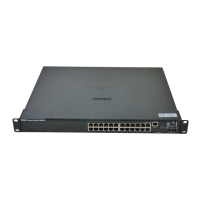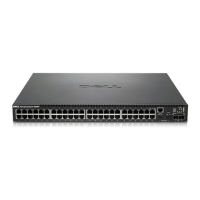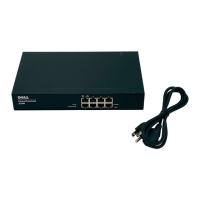6. Press <b> to select the option for 115200 baud.
There are two baud rate settings available: 9600 and 115200. Using the higher baud rate minimizes the time required to download firmware code files.
7. Setyourcomputer'sterminalemulationsoftwaretomatchthe115200baudrate.Press<Enter>toresetcommunicationswiththeswitch.
Select>
Change baudrate [A]9600 [B]115200
Baudrate set to 115200
8. Before you download the firmware, ensure that the switch has sufficient flash memory space for the new code file.
You can store up to two runtime and two diagnostic code files in the switch's flash memory. Use the [D]elete File command to remove a runtime or
diagnostic file that is not set as the startup file (the S/Up setting for the file is 0).
9. Press <x> to download the new code file.
If you are using Windows HyperTerminal, click Transfer and then click Send File. Select the XModem Protocol and use the Browse button to find the
required firmware code file on your computer.
The Xmodem file send window displays the progress of the download procedure.
10. After the file has been downloaded, press <r> for runtime code or <d> for diagnostic code when Update Image File: appears.
11. Specify a name for the downloaded code file. Filenames can be up to 32 characters, are case sensitive, and cannot contain spaces.
The following figure shows an example of the download procedure for a runtime code file:
Select>x
Xmodem Receiving Start ::
[R]untime
[D]iagnostic
Update Image File:r
Runtime Image Filename : run_10030
Updating file system.
File system updated.
[Press any key to continue]
12. To set the new downloaded file as the startup file, click the [S]et Startup File menu option.
13. When you have finished downloading code files, click the [C]hange Baudrate menu option to change the baud rate of the switch's serial connection
back to 9600 baud.
14. Set your computer's terminal emulation software baud rate back to 9600 baud. Press <Enter> to reset communications with the switch.
15. Press <q> to quit the firmware-download mode and boot the switch.
Technical Specifications
IEEE 802.3x, IEEE 802.1D, IEEE 802.1Q, IEEE 802.1p,
IEEE 802.3ac, IEEE 802.3ad

